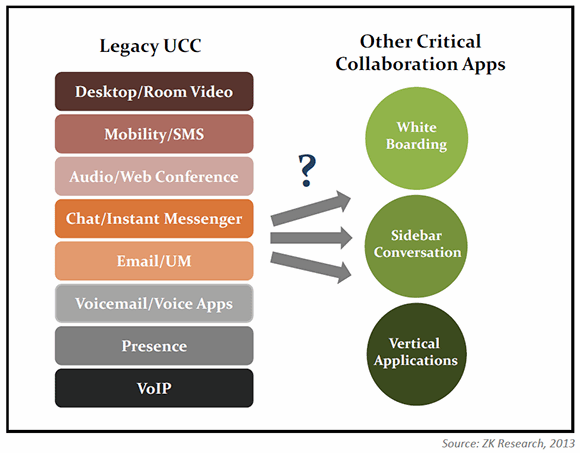Why UC&C technology falls short of business needs
Unified communication and collaboration (UC&C) technology has been beneficial to enterprises for many years and in many ways, but it needs to go one step further.
The status of current UC&C deployments
Enabling a more collaborative workforce seems straightforward: Give the right tools to the right people and they'll collaborate more effectively. However, that's rarely the case. Despite the strong, multifaceted value proposition, organizations are slow to adopt unified communications and collaboration (UC&C) solutions. A recent ZK Research study shows the majority of companies have deployed basic UC, and only 5% have a UC&C solution (see Figure 3).

Where UC&C deployments fall short
There are several reasons why UC&C deployments are so few and limited in scope:
- To solve time and distance barriers, companies have deployed more collaboration tools. Islands of collaboration tools thwart efficiency rather than facilitate it. It's common to find document sharing, chat, video conferencing, VoIP, Web conferencing, email, etc., all on a worker's desktop, laptop, smartphone or tablet. This creates a usage barrier, as these tools aren't well integrated. Some are available on a desktop, some on a mobile device and some on a browser, which makes them difficult to use.
- Many collaboration tools are deployed on separate networks. Traditional applications such as video conferencing favor this model because it can control quality. The drawback is that it's difficult or impossible to integrate with other collaborative applications such as WebEx or GoToMeeting.
- Traditional collaboration tools focus on conferencing, not collaboration. They enable workers to see or hear one another, but the single-thread nature of these tools does not facilitate effective collaboration.
- Poor document-sharing capabilities. Web conferencing is only really good for sharing documents remotely. One person can share a document with many people, but many people cannot share, which is a lousy fit for the way enterprises need to work today.
- Consumer tools are rarely supported, let alone integrated. Workers often use consumer tools such as Skype to work with customers and others on the outside. Getting these tools to work with corporate firewalls is challenging. Even when they can, they're not seamlessly integrated with corporate collaboration tools. If Skype integrated with video systems, B2B video would be broadly adopted.
- They are limited to mainstream electronic collaboration tools. Legacy UC&C vendors focus on bringing together mainstream, electronic tools such as voice, chat, presence and Web conferencing to enable people to collaborate more effectively. However, many other collaboration tools, such as white boards provide the ability to share documents and sidebar conversations that are often needed for users to work together. These are typically location-based and do not share well, making multisite collaboration difficult to implement due to latency-caused time lags.
- Systems control the experience. Legacy telepresence and videoconferencing systems do not give users any control over who they can see. Once seven or more people join a session, active switching is used to rotate between active speakers. While this might seem the most logical way of displaying individuals, not everyone's focus is on the same speaker. Users need more control over their focus.
From legacy UC&C to visual conversations
Because collaboration tools are delivered over discrete work streams, collaboration is a set of disjointed processes. Driving more effective collaboration requires bringing separate streams together through delivery of visual conversations.
